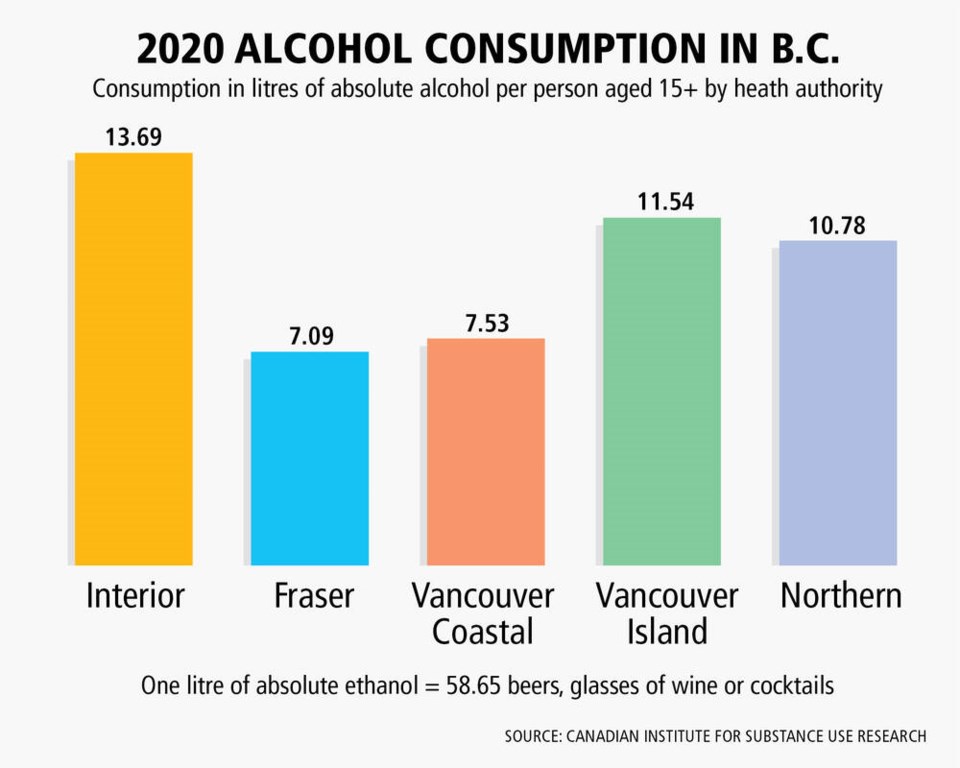Alcohol consumption in B.C. cracked a 20-year record during the first year of the COVID-19 pandemic, according to an analysis of provincial alcohol sales.
The analysis, by the University of Victoria’s Canadian Institute for Substance Use Research, found a typical resident over 15 drank 9.32 litres of pure alcohol — equivalent of 547 cans beer or 104 bottles of wine — between April 2020 and March 2021.
Dr. Tim Naimi said it’s the highest level of alcohol consumption recorded since they started monitoring in 2001, but it comes as no surprise. Naimi said researchers saw an increase early in the pandemic as people stockpiled alcohol in case it became difficult to buy. They wondered if it might return to normal at some point, but it didn’t.
Naimi said there has been a spike in consumption on top of a general increase in consumption since 2013. “Consumption has risen in total about eight to 10 per cent, which doesn’t sound like much, but it’s quite significant in terms of public health,” he said, noting research shows that leads to significant increases in alcohol-related injuries, domestic violence, car crashes and chronic diseases such as heart disease and cancer.
The data does not suggest why consumption has increased, but he noted it has coincided with a loosening of alcohol policies in the province during the pandemic.
“Early [in the pandemic] we had restrictions around bars and restaurants, but remember, 80 per cent of the alcohol is not sold in bars and restaurants, it’s sold in liquor stores,” he said. “All the changes from government policy have gotten rid of those safeguards and kind of unbuckled the seatbelts, if you will, while we’re driving down the road.”
Those policies, which undid years of “carefully constructed alcohol policy” could be a lasting negative public health legacy of COVID, Naimi said.
The analysis showed consumption at bars dropped 60 per cent during the first year of the pandemic, while it dropped 46 per cent in restaurants. Sales at private liquor stores increased and accounted for 55 per cent of all alcohol sold in B.C.
Naimi said while it’s very likely the pandemic has affected alcohol consumption, it’s also likely that alcohol consumption has affected the pandemic. He said the large, super-spreader events all tend to involve drinking, which leads to relaxing social distancing standards and not wearing masks.
Interior health had the highest consumption at 13.69 litres per capita, Island Health was second at 11.54 litres. Consumption was up in 2020 over 2019 in four of the five health authorities. Beer remains the most popular alcoholic beverage in B.C., although its relative market share has been decreasing since 2016.
Naimi said while the analysis does not offer recommendations, it suggests some things could be done, such as raising the minimum price of alcohol and keeping a lid on the number of licensed outlets.



